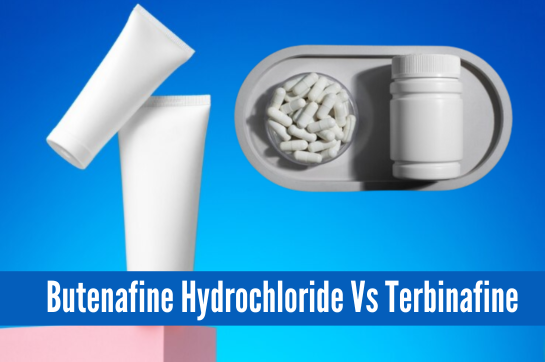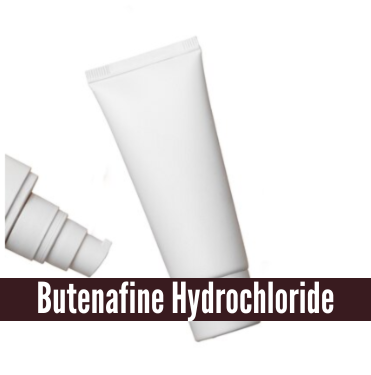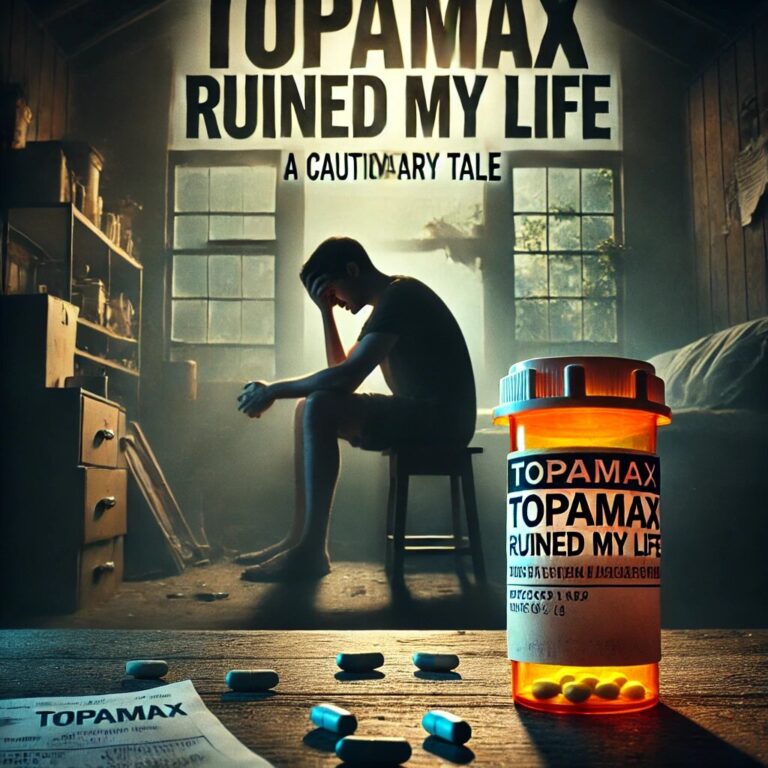Butenafine Hydrochloride vs Terbinafine: What You Need to Know

Fungal infections can be persistent and uncomfortable, making effective treatment crucial. Understanding the best options for antifungal treatments is essential for dermatologists, pharmacists, and skincare enthusiasts alike. If you are dealing with athlete’s foot, jock itch, or ringworm, you can find effective treatment options like Lamisil Antifungal Cream.
Two popular antifungal agents, butenafine hydrochloride and terbinafine, are often considered for treating various fungal infections. But how do these two treatments compare? This post will explore the differences, benefits, and ideal applications of butenafine hydrochloride and terbinafine to help you make informed decisions.
What is Butenafine Hydrochloride?
Butenafine hydrochloride, commonly known by its brand name Mentax, is a synthetic benzylamine antifungal agent used in topical treatments. It works by inhibiting the synthesis of ergosterol, a critical component of fungal cell membranes. This disrupts the cell membrane’s integrity and leads to fungal cell death.
Mechanism of Action
Butenafine specifically targets squalene epoxidase, an enzyme involved in ergosterol synthesis. By blocking this enzyme, butenafine effectively halts the growth and proliferation of fungi. This makes it particularly effective against dermatophytes, molds, and yeasts.
Common Uses
Butenafine hydrochloride is typically used to treat tinea infections such as athlete’s foot (tinea pedis), jock itch (tinea cruris), and ringworm (tinea corporis). Its efficacy in treating superficial fungal infections makes it a go-to choice for many healthcare providers.
Applications
Butenafine is available in various forms, including creams and sprays, and is applied topically. It is usually prescribed for:
- Athlete’s foot: Butenafine can relieve the itching, burning, and scaling associated with tinea pedis.
- Jock itch: It helps to reduce the redness, itching, and irritation caused by tinea cruris.
- Ringworm: Butenafine treats the characteristic circular, red rash of tinea corporis.
Side Effects
Common side effects of butenafine include:
- Mild skin irritation
- Redness
- Burning sensation
- Itching
Serious side effects are rare but can include severe allergic reactions characterized by rash, itching/swelling (especially of the face/tongue/throat), severe dizziness, and trouble breathing.
Also Read: Can I Use Clotrimazole and Butenafine Hydrochloride Together?
What is Terbinafine?
Terbinafine, known by its brand name Lamisil, belongs to the allylamine class of antifungals. It is available in topical and oral forms and is known for its broad-spectrum antifungal activity.
Mechanism
Similar to butenafine, terbinafine targets squalene epoxidase, disrupting ergosterol synthesis in the fungal cell membrane. However, terbinafine has a slightly different binding affinity, which may contribute to its broader spectrum of activity.
Common Uses
Terbinafine is widely used to treat various fungal infections, including tinea pedis, tinea cruris, tinea corporis, and onychomycosis (fungal nail infections). Its ability to penetrate keratinized tissues makes it particularly effective for nail infections, which are often resistant to other treatments.
Applications
Terbinafine is used to treat:
- Athlete’s foot: Terbinafine can relieve itching, burning, and scaling symptoms.
- Jock itch: It helps reduce the redness, itching, and irritation caused by tinea cruris.
- Ringworm: Terbinafine treats the ring-shaped rash of tinea corporis.
- Onychomycosis: Terbinafine is particularly effective for fungal nail infections and is often prescribed in oral form for this purpose.
Side Effects
Common side effects of topical terbinafine include:
- Burning or stinging sensation
- Itching
- Redness
Oral terbinafine has a broader range of side effects, including:
- Gastrointestinal issues (nausea, diarrhea, abdominal pain)
- Headache
- Rash
- Changes in taste or loss of taste
- Elevated liver enzymes, indicating potential liver damage in rare cases
What is the Difference Between Butenafine Hydrochloride and Terbinafine?
While both butenafine hydrochloride and terbinafine are effective antifungal medications for treating skin infections, they differ in key ways.
One of the primary differences lies in their chemical composition; butenafine hydrochloride is a benzylamine derivative, whereas terbinafine belongs to the allylamine class of antifungals.
This difference in chemistry may influence their mechanisms of action. Butenafine primarily inhibits the enzyme squalene epoxidase, while terbinafine also affects the same enzyme but with more potent efficacy against dermatophytes.
Comparing Efficacy
Both butenafine hydrochloride and terbinafine boast high efficacy rates, but how do they stack up against each other?
Clinical Studies
Multiple studies have shown that butenafine and terbinafine are highly effective in treating tinea infections. One study found that butenafine had a slight edge in treating tinea pedis with a shorter treatment duration. Another study indicated that terbinafine showed superior results for onychomycosis.
Patient Outcomes
Patient satisfaction is often related to the speed of relief and the convenience of the treatment regimen. While both medications are effective, some patients may prefer butenafine for its once-daily application, while others might choose terbinafine for its broader spectrum and oral treatment option.
Resistance and Recurrence
Fungal resistance to butenafine and terbinafine is relatively low, although improper use can lead to recurrence. Ensuring patients adhere to the prescribed regimen is crucial for achieving the best outcomes and minimizing the risk of resistance.
Cost and Accessibility
Cost and accessibility are important factors for both patients and healthcare providers when choosing an antifungal treatment.
Butenafine Hydrochloride

Butenafine is available as a generic medication, making it a cost-effective option for many patients. Its availability in over-the-counter formulations also makes it accessible.
Terbinafine
Terbinafine is also available in generic forms for both topical and oral formulations. While the oral form may be more expensive due to the extended treatment duration, its effectiveness for stubborn infections like onychomycosis can justify the cost.
Insurance Coverage
Most insurance plans cover both medications, though coverage for oral terbinafine may require prior approval due to its higher cost. Patients should check with their insurance providers to understand their options.
Practical Tips for Dermatologists and Pharmacists
Healthcare professionals play a crucial role in guiding patients through their treatment options.
For Dermatologists
When prescribing antifungal treatments, consider the type and severity of the infection, patient preferences, and potential side effects. Educate patients on the importance of adherence to prevent recurrence and resistance.
For Pharmacists
Pharmacists can provide valuable support by counseling patients on proper application techniques, potential side effects, and the importance of completing the full course of treatment. They can also assist in identifying cost-saving options for patients.
Collaborative Care
A collaborative approach between dermatologists and pharmacists can enhance patient outcomes. Regular communication and shared decision-making ensure patients receive the most appropriate and effective treatment.
The Role of Skincare Enthusiasts
Skincare enthusiasts can proactively manage fungal infections by understanding the importance of antifungal treatments and maintaining good hygiene practices.
Early Detection
Early detection and treatment of fungal infections can prevent complications and reduce the risk of spreading the infection. Skincare enthusiasts should be aware of common symptoms and seek prompt treatment.
Preventive Measures
Maintaining proper foot hygiene, avoiding sharing personal items, and using antifungal sprays in communal areas can help prevent fungal infections. Skincare enthusiasts can also educate others on these preventive measures.
Product Recommendations
Skincare enthusiasts can share their experiences and recommendations for antifungal products, helping others make informed choices. Reviews and testimonials can provide valuable insights into the effectiveness of different treatments.
How Long Does It Take for Butenafine Hydrochloride to Work?
The onset of action for butenafine hydrochloride can vary depending on the type and severity of the fungal infection being treated. Typically, patients may notice improvement within a few days of initiating treatment, particularly for superficial infections such as tinea pedis.
However, complete resolution of the infection may take several weeks, as it is essential to continue the treatment for the duration recommended by a healthcare professional, usually two to four weeks.
Adhering to the prescribed regimen ensures optimal results and reduces the likelihood of recurrence. A longer treatment duration may be necessary for chronic or more extensive infections.
Future Trends in Antifungal Treatments
Antifungal treatments are continually evolving, with new developments on the horizon.
Emerging Therapies
Research into new antifungal agents and combination therapies holds promise for more effective treatments with fewer side effects. Novel drug delivery systems are also being explored to enhance the efficacy of existing medications.
Personalized Medicine
Advances in personalized medicine may lead to tailored antifungal treatments based on individual patient characteristics and genetic profiles. This approach could optimize treatment outcomes and minimize adverse effects.
Digital Health
Digital health technologies, such as telemedicine and mobile health apps, transform how patients access and manage antifungal treatments. These tools can improve patient engagement, adherence, and overall outcomes.
Conclusion
Both medications offer powerful antifungal properties with unique advantages in the battle of butenafine hydrochloride vs. terbinafine. Understanding their differences, applications, and potential side effects can help dermatologists, pharmacists, and skincare enthusiasts make informed decisions for optimal treatment outcomes.
Whether dealing with a common tinea infection or a stubborn onychomycosis, choosing the proper antifungal treatment is crucial for achieving healthy, fungus-free skin.
FAQ:
Can I use butenafine hydrochloride and terbinafine together?
Using both medications simultaneously without consulting a healthcare provider is generally not recommended, as they both target fungal infections and may not offer additional benefits when used together.
How long does it take for butenafine hydrochloride to work?
Butenafine hydrochloride typically begins to show improvement in symptoms within a few days, but complete treatment usually takes 2-4 weeks.
Is terbinafine safe for long-term use?
Oral terbinafine can be used for long-term treatment under medical supervision, but it requires regular monitoring due to potential liver toxicity.
What should I do if I experience side effects from these medications?
If you experience side effects, stop using the medication and consult a healthcare provider. They can provide advice and alternative treatment choices if necessary.
Are there any natural alternatives to these antifungal treatments?
Some people use natural remedies such as tea tree oil and garlic extract for fungal infections, but their effectiveness is not as well-documented as that of pharmaceutical treatments. Always consult a healthcare provider before trying alternative treatments.





